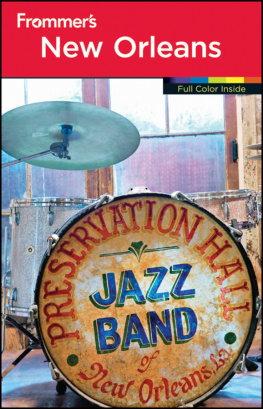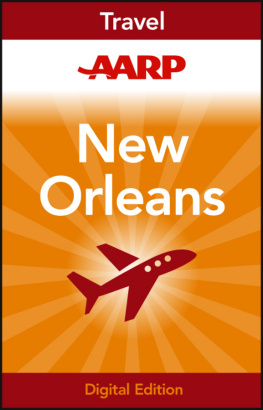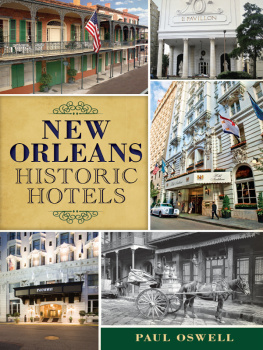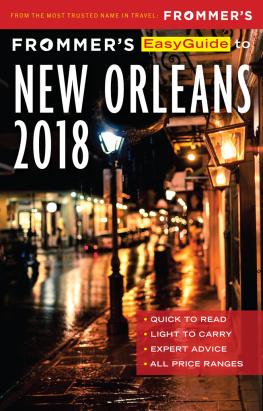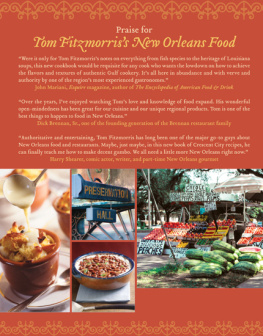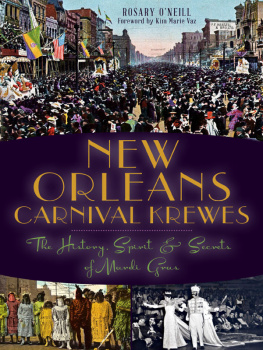Published by American Palate
A Division of The History Press
Charleston, SC
www.historypress.com
Copyright 2019 by Mikko Macchione
All rights reserved
Front cover, top (from left to right:) All photographs by Stephen Charles Nicholson.
Front cover, bottom: Detroit Publishing Co., publisher. William Henry Jackson, photographer. Cutting sugar cane in Louisiana. Baton Rouge, Louisiana, United States, None. [Between 1880 and 1897.] Photograph https://www.loc.gov/item/2016817573/.
First published 2019
E-Book edition 2019
ISBN 978.1.43966.652.4
Library of Congress Control Number: 2018963664
Print edition ISBN 978.1.46713.684.6
Notice: The information in this book is true and complete to the best of our knowledge. It is offered without guarantee on the part of the author or The History Press. The author and The History Press disclaim all liability in connection with the use of this book.
All rights reserved. No part of this book may be reproduced or transmitted in any form whatsoever without prior written permission from the publisher except in the case of brief quotations embodied in critical articles and reviews.
BARREL OPENED
FOREWORD
Rum. It is historically the preferred libation of privateers and buccaneers, Jamaicans, the Maritimes, Choctaw Indians, the Royal Navy, Marco Polo, Hemingway, Hunter S. Thompson and Jimmy Buffet fans.
Parrotheads notwithstanding, rum is one of the civilized worlds most popular, exalted, mysterious, mythological and misunderstood beverages. It exists in species of light, dark and spiced. It has been the source of revelry, rebuke, revenge and rebellions across the globe for eons.
Whatever name it goes byBacardi, Meyers, Captain Morgan, Nelsons blood, kill-devil, demon water, pirates drink, navy neaters or screechrum has been the source of grandeur, riches, ruin, camaraderie and betrayal for centuries.
It is the drink of writers, kings and killers. It is the drink of literature, romance and dreams. It is the drink of the islands, the open seas, uncharted waters and unsettled lands.
The Little Drummer Boy; even he favored it. Rum-pum-pum-pum.
It is the drink of Louisiana, of New Orleans and of Hurricanesfour shots of rum, fruit juice, grenadine, garnished with a slice of orange and cocktail cherries.
Rums history is both sweet and liquid. Distilled from sugar or molasses, its origins are entirely unknownor at least unproven. But rum is believed to originate from archaic China and/or India. Its provenance is fluid, literally. Everything about rum has changed, yet everything in time remains the same.
Made in China. Made in India. What isnt?
Made in New Orleans.
It is a conflicted drink.
There are towns named Rum in Austria, Iran and Hungary. The Rum River runs nearby the Twin Cities in Minnesota, from Mille Lacs Lake to the Mississippi River and thereby ending in, where else? New Orleans.
The Dakota Indian tribes original name for that meandering Minnesota waterway was Watpa Wakan, which translates roughly as River of Spirits. Legend goes that European interlopers to the Midwest mistook the spirits part for adult beverages and took to calling it the Rum Rivera certain slight to those who looked upon their natural resources as gifts from higher sources than distillers.
There is a strong push among Native Americans and human rights organizations in the Midwest to return the river to its original name. But state legislators and general obstructors have been reticent to cooperate or concede, noting that the current name is so entrenchedand belovedin the wider community, that any attempts to change it would be a fruitless and divisive enterprise.
Water, water, everywhere and not a drop to drink. But mix it with sugar or molasses and ferment it, and you have got yourself a commodityone that folks are willing to trade for, fight for, honor or degrade themselves over.
Great Britains Sugar Act of 1764regulating sugar, molasses and the slave trade in the new coloniesis cited as among one of the chief provocations leading up the American Revolution. George Washington ordered and served up a barrel of Barbados rum at his inauguration in 1789.
Rum took on the moniker Nelsons blood because legend has it that, upon his victory, and subsequent death, at the Battle of Trafalgar, Horatio Nelsons body was preserved in a cask of rum for return to his native England. Having depleted themselves of other alcoholic options on the journey home to their Motherland, sailors aboard the HMS Victory tapped the deceased and pickled admirals keg to salve their thirst.
The Rum Rebellion in 1808 came about when Captain William Bligh (yes, that Captain Bligh), serving as governor of New South Walesthe United Kingdoms convicts outpost later known as Australiacut off the rum trade to and from the island.
Yo ho ho and a bottle of rum. Seamans punch. The Easy Peace of port cities around the world. And the ingredient that makes the fruit burst into flames when the prim, proper and tuxedoed waiters at the legendary Brennans restaurant in the French Quarter perform their ritualistic, traditional, nightly, table-side immolated service of bananas Foster to the New Orleans gentry and genteel.
There is lots of sugar in south Louisiana, the homeland of pirates, hurricanesboth liquid and meteorologicaland bars that never close. The state produces 17,000 tons of sugarcane a year.
That is a lot of sugar. That is a lot of rum. And not all the natives have historically appreciated sugars distillation to spiritsthe drink kind, not the ephemeral, ethereal and ancestral.
Choctaw Indian chieftains in south Louisiana originally objected to the widespread trade and dissemination of rum among their people due to the dissolute behavior it was known to cause among the tribes menfolk.
An ancient document blames all disorder and quarreling between us and our white men to rum that pours in upon our nation like a great sea. The Choctaws recruited the chief of the Red Stick Indians (that would be Baton Rouge in French) to their cause in the early nineteenth century, but individual acts of revolt and rebellion among the tribesmen quashed the chiefs noble intentions.
Let the liquor flow.
And it has flowed downriver ever since in New Orleans. There are countless daiquiri bars across the region. It is a thriving cottage industry on the world-famous Bourbon Streetthe Boulevard of Broken Dreams. But they are not really daiquiris. They are more like adult slurpees.
A daiquiri isnot just technically, but actuallya drink made from rum, lime juice and, according the authoritative mixologists bible of the city Stanley Clisby Arthurs 1937 classic Famous New Orleans Drinks and How to Mix Ema dash of grenadine.
Arthur dismisses the local popular frozen daiquiri concoction as a champagne glass filled with snow, cold as Christmas, and as hard as the heart of a traffic cop.
And it rarely contains rum. The contemporary version of psychedelic concoctions they call daiquiris in New Orleans, those favored by Saturday night rogues in the French Quarter, are generally infused with vodka, Everclear, Hypnotic and other strange and powerful brews that bear no relation to purity, to rum, to sugar, to Jamaica. Hell, not even to Jimmy Buffet.



